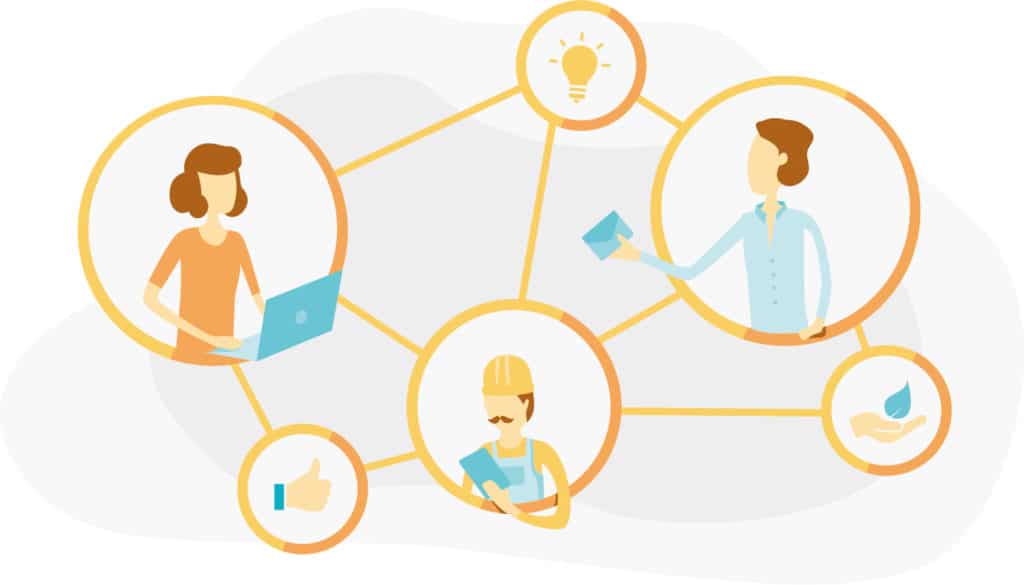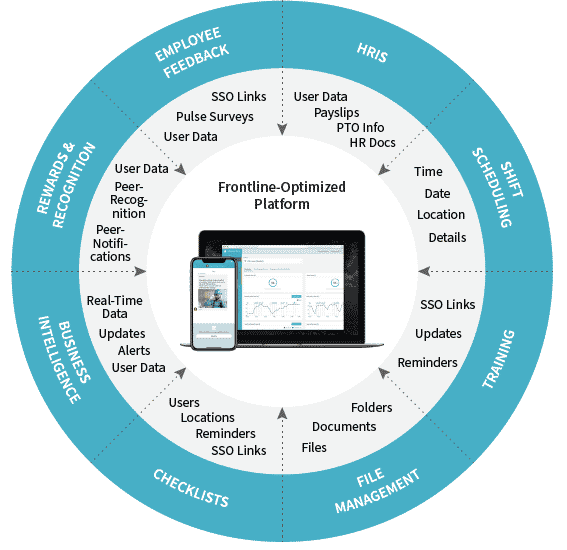The Rise of the Frontline Worker: The First Steps on the Journey to Digitalization

Welcome to part four of our blog series where we unpack select themes from each chapter of my new book, “The Rise of the Frontline Worker.” Click here to read part one, here to read part two, and here to read part three.
As 6th-century sage Lao Tzu famously observed, “A journey of a thousand miles begins with a single step.” The journey to frontline digitalization, though not measured in miles per se, also begins with a step, in fact, four of them. Here’s a breakdown of how you can make your foray into digitalization is surefooted from the start.
Organizations hoping to safeguard their future know that frontline digitalization is essential. Their success at implementing any new technology, however, depends on two main factors:
- People use it
- They find value in using it, so they keep using it (this is often called ‘stickiness’)
So what’s in the way of people using new technologies, particularly for frontline employees? A recent TEKsystems research project, 2020 State of Digital Transformation, found that employee mindset/behaviors were the biggest barrier.
Fortunately, there’s a fix for this: In my experience working with frontline-majority organizations around the world, I’ve found that when the C-suite and leadership teams set an example by using any platforms themselves, other employees, including the frontline, are more likely to embrace it too.
This is especially true when senior management takes care to make themselves as visible as possible on the platform. They can do this by welcoming new hires to the organization, praising good work, and generally telegraphing that they’re committed to using any new digital tool by actually using it.
With COVID-19 and the subsequent economic fall out, frontline workers need additional reassurance that they’re valued in their respective organizations. Leadership is in the unique position of providing this assurance when leveraging platforms that make them visible and accessible to their employees. This helps build camaraderie and primes employees to be a more accessible audience for top-down communications. In short, when frontline workers come to perceive a platform as a source of useful information, they’re more inclined to use that platform regularly.
Moreover, according to a recent study from app developer Nulab, 40% of employees surveyed report that they felt work communication platforms made them more productive.
How Far on the Digitalization Journey Does Your Company Want to Travel?
Having a platform that enables real-time communication between employer and employee, that also facilitates peer-to-peer communication between frontline employees can be transformative from the outset. But that’s not all it takes. I’ve identified four steps along an organization’s journey toward digital transformation that underscore how best to support the efforts of the frontline along the way.
Step 1: Reach, Connect, Engage

Using a mobile collaboration platform for frontline employees allows employers to reach their entire workforce with the same internal message.
Moreover, team leads and administrators can access detailed analytics around those who have seen their messages and confirm that they are reaching the right team members the right way. Likewise, frontline team members who don’t speak a company’s predominant language can instantly translate messages into their preferred language. The frontline workforce is very diverse, and there are many different languages spoken. No employee or employer can risk a message not being fully understood, especially if it’s about health and safety. So, a mobile collaboration platform can save time and reduce misunderstandings by translating messages into each frontline worker’s preferred language.
It’s worth noting that over the past 12 months at Beekeeper, we’ve seen users translate content into more than 100 different languages. It’s clear from our customers that this translation capability has been crucial to communicating with frontline workers during this crisis and, as always, it’s secure, traceable, and complies with data privacy regulations.
Step 2: Digitalize

As actress Pearl Bailey aptly put it, “What the world really needs is more love and less paperwork.” Few, I think, would disagree, particularly those who have to manage the paperwork on a daily basis. Digitalization promises to improve the employee experience by transforming paper-based processes into digital processes that increase the efficiency of both frontline workers and their managers.
Almost every area of the business can benefit from digitalization, but one of the most tangible benefits to the frontline is realized in the following three examples:
1. Onboarding
A large part of the dissatisfaction with onboarding is due to an over-reliance on paper and filling out forms. From a legal perspective, the use of digital documents and electronic signatures instead of antiquated paper-based practices is perfectly acceptable so why not convert to digital solutions? It’s better for the environment, your bottom line and, most importantly, your employees.
2. Work Schedules
By digitalizing work schedules, an organization can communicate shift times directly to their frontline workers as well as handle any changes or requests, such as requesting PTO, through a mobile app, making the process easier for everyone.
3. Forms
While the desk-based workforce has been digitalized for years, frontline workers have historically been underserved when it comes to access to tools and connectivity. If part of your frontline workers’ responsibilities involve managing paper forms, digitalizing those processes will not only make the performance of their duties more efficient, the workplace will be more equitable.
Step 3: Automate

A study by UiPath and The Economist Intelligence Unit with global senior business executives revealed that nearly half of respondents believe automation is most effective when it complements human labor, instead of replacing it.
This is a fascinating statistic that highlights a trend in a variety of sectors, especially those with large frontline workforces:
• Employees are open to the use of technology and are similarly receptive to that technology being improved, enhanced, and optimized.
• Mobile platforms that can automate certain tasks and return bandwidth to frontline workers to pursue more meaningful duties boosts both efficiency and morale.
In fact, the same UiPath study found that more than 90% of organizations already use technology to automate business processes and that 73% are very or entirely satisfied with the benefits resulting from automation.
Step 4: Optimize

If a business isn’t constantly improving, it’s essentially standing still. Because the frontline workforce is such a large and important part of any organization, ensuring that it’s fully digitalized is an important step in ensuring the future success of that business.
Here are three points to consider to optimize this part of the digitalization journey:
- There should be an emphasis on continuous improvement of workflows and building a strategy using data and insights from the employee collaboration platform.
- Data points should be used to make consistent, iterative improvements to the employee app, ensuring that it continues to add value and deliver a competitive advantage to the organization.
- Analytics technology should identify trends and patterns in data as a key component of continuous improvement.
Throughout your organization’s journey to digitalization, keep in mind that the significance of an empowered, well-equipped, motivated, and engaged frontline workforce should not be underestimated. The real key to success lies in embracing frontline digitalization and remaining open to its future possibilities. Digital enablement for frontline workers is the future. It’s not only good for business, it’s the right thing to do.
My new book, “The Rise of the Frontline Worker” explores the critical significance of the modern-day frontline workforce, and unpacks why these essential employees will play a crucial role in the global economic recovery process. Get it now at Amazon!
Want more insight into the future of work for frontline employees? Fill out the form below to download our 2022 Frontline Trends Report today!
About the author
Cristian Grossmann
CEO and Co-Founder, Beekeeper
Cris is CEO and Co-Founder of Beekeeper, an award-winning digital workplace app that digitizes the non-desk workforce in 137+ countries by connecting operational systems and communication channels within one intuitive platform. Beekeeper helps companies increase performance and productivity, enhance employee engagement, reduce turnover costs, and elevate corporate culture. Prior to founding Beekeeper, Cris worked for Accenture on high profile international projects in the field of IT Strategy for the financial and public sectors. Cris studied Chemical Engineering and got his Ph.D. in Electrical Engineering, both at ETH Zurich. Before moving to beautiful Zurich, Cris was born and raised in an entrepreneurial Swiss-Mexican family in Mexico City.
Interested in learning more?
Join 1200+ companies transforming frontline work with Beekeeper. Start your journey today to make every task easier, every team stronger, and every shift smoother.







